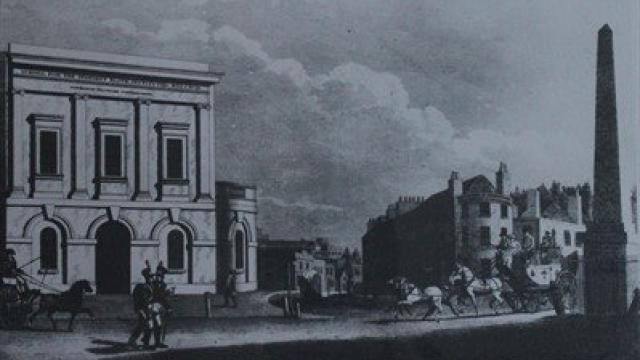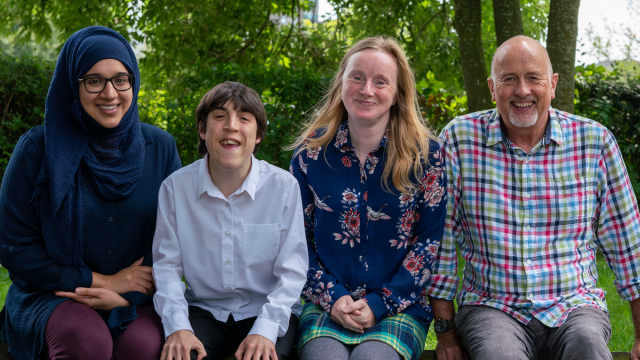
SeeAbility's royal connection
For 168 years of our 225-year history, we’ve been lucky enough to have a royal patron to support our work. Queen Victoria was our first patron in 1838, and we’ve had royal patrons ever since, apart from a 14 year hiatus between 1968 and 1982, when our patrons were the Archbishops of Canterbury.
What is royal patronage?
Royal patronage can be a powerful way to raise the profile of a charity and provide vital publicity; out of around 170,000 charities currently registered in the UK, only 3,000 have royal patrons. While plenty of charities have celebrities to carry out a similar function, royal patrons come with a much broader supporter base which isn’t limited to a particular interest group, and carries weight across the generations.
In recent years, royal patrons have become more and more involved with their charities, and the charities supported have been more representative of the particular royal’s interests. Our early patrons seem to have been much more distant, and there’s no record of any of our royal patrons actually visiting the school or hosting any receptions between 1838 and 1911. However through the 20th century, supporting charities has become a much more central aspect of royal duties.

This is quite evidently the case with the relationships we’ve had with our patrons. The first royal patron to really engage with the school was George V, who granted us the title of ‘Royal’, formalising the royal patronage. His son, Prince George, supported us more eagerly, but it was his wife, Princess Marina (pictured visiting the Royal School for the Blind in 1958), who really got involved; she took over as Patron following George’s untimely death, and made numerous visits to the school, supporting us with fundraising events and galas.
Recent patrons
 Princess Diana (pictured opening new flats for the Royal School in 1982) was equally energetic, visiting three times and hosting fundraising galas. Her 1982 visit was her first solo engagement, so naturally attracted a huge amount of media attention, receiving coverage in both national newspapers and on TV. One televised report of the visit actually claimed her great-grandfather was one of the founding members of the charity, but there doesn’t seem to be any evidence to support the claim.
Princess Diana (pictured opening new flats for the Royal School in 1982) was equally energetic, visiting three times and hosting fundraising galas. Her 1982 visit was her first solo engagement, so naturally attracted a huge amount of media attention, receiving coverage in both national newspapers and on TV. One televised report of the visit actually claimed her great-grandfather was one of the founding members of the charity, but there doesn’t seem to be any evidence to support the claim.
Our current Patron, The Duchess of Gloucester, has continued the trend through her constant support over almost 30 years. In recent years she has hosted two receptions for SeeAbility, at St James' Palace in 2017 and at Buckingham Palace in 2022, and she visited people we're supporting in Exeter in 2018.
We're so grateful for all the support we've had from the royal family through the years, and we're immensely proud of our royal status.
Our royal supporters and patrons

Prince Edward, Duke of Kent and Streathearn
The earliest record of SeeAbility’s connection with royalty was when Prince Edward donated £51 in 1813. There’s no record of how he came to be associated with the school, but the sum certainly made him one of the most significant donors for the early school. Prince Edward is most notable historically for being the father of Queen Victoria.


Queen Victoria
Our first royal patron was actually Queen Victoria! In 1838, just a year into her reign, the young queen stepped into the role. There’s no record of her visiting, but she supported the school by insisting that all her paintings were hung using twine made at the school’s workshops. In 1897, to raise extra funds, the school sold tickets to view her Diamond Jubilee procession which passed closeby. It probably doesn’t count as a visit!


King Edward VII
When Queen Victoria died in 1901 after 63 years as Patron, her son King Edward VII took over in the role, and the following year his wife, Queen Alexandra, joined him. There is no record of either of them actually visiting the school in his nine-year reign.


King George V
In February 1911, George V granted the school the title ‘Royal’, so it became ‘The Royal School for the Indigent Blind’. In the same month, he took over the vacant role of Patron (his father, Edward VII had died in May of the previous year). He served as Patron until his death in 1936.


Prince George and Princess Marina
Prince George, the fourth son of George V (and uncle to Queen Elizabeth II), succeeded his father as Patron in 1936, and ‘showed great interest in the school’ until he died just five years later at age 39. George's patronage saw the fifth successive generation of royal support for the charity, passing from parent to child all the way from his great-great-grandfather, Edward.
Upon his death, his wife Princess Marina took over, who proved to be an energetic supporter; visiting the school a number of times before her death in 1968. Between 1968 and 1982, the charity was patronised by the Archbishops of Canterbury.


Princess Diana
When Princess Diana stepped in, she visited three times and attended numerous fundraising events. The man in the picture, Chris, is still supported by SeeAbility. He was allowed to touch Diana’s face, and commented “She was very very pretty, I can tell you that!” In 1996 she stepped down as Patron, but remained close to SeeAbility and was the first person to donate towards the building of Heather House.


HRH The Duchess of Gloucester
Our current patron has been with SeeAbility for over 20 years, and has visited people SeeAbility supports countless times over that period. Most recently, she hosted a reception for SeeAbility at Buckingham Palace in October 2022, where she spoke of SeeAbility as being an old friend. She is dedicated and generous with her time, and we are proud to have her as our patron.




